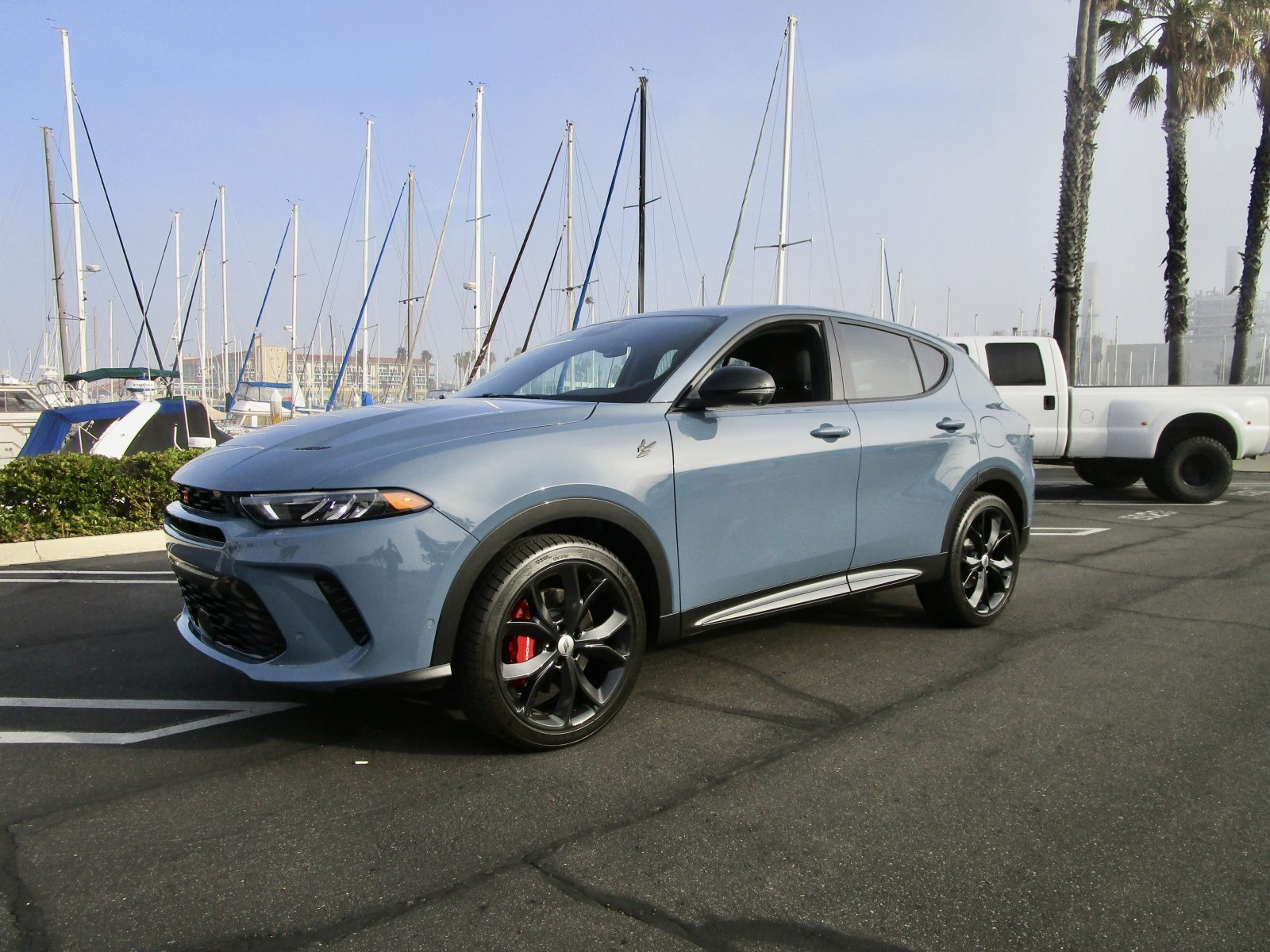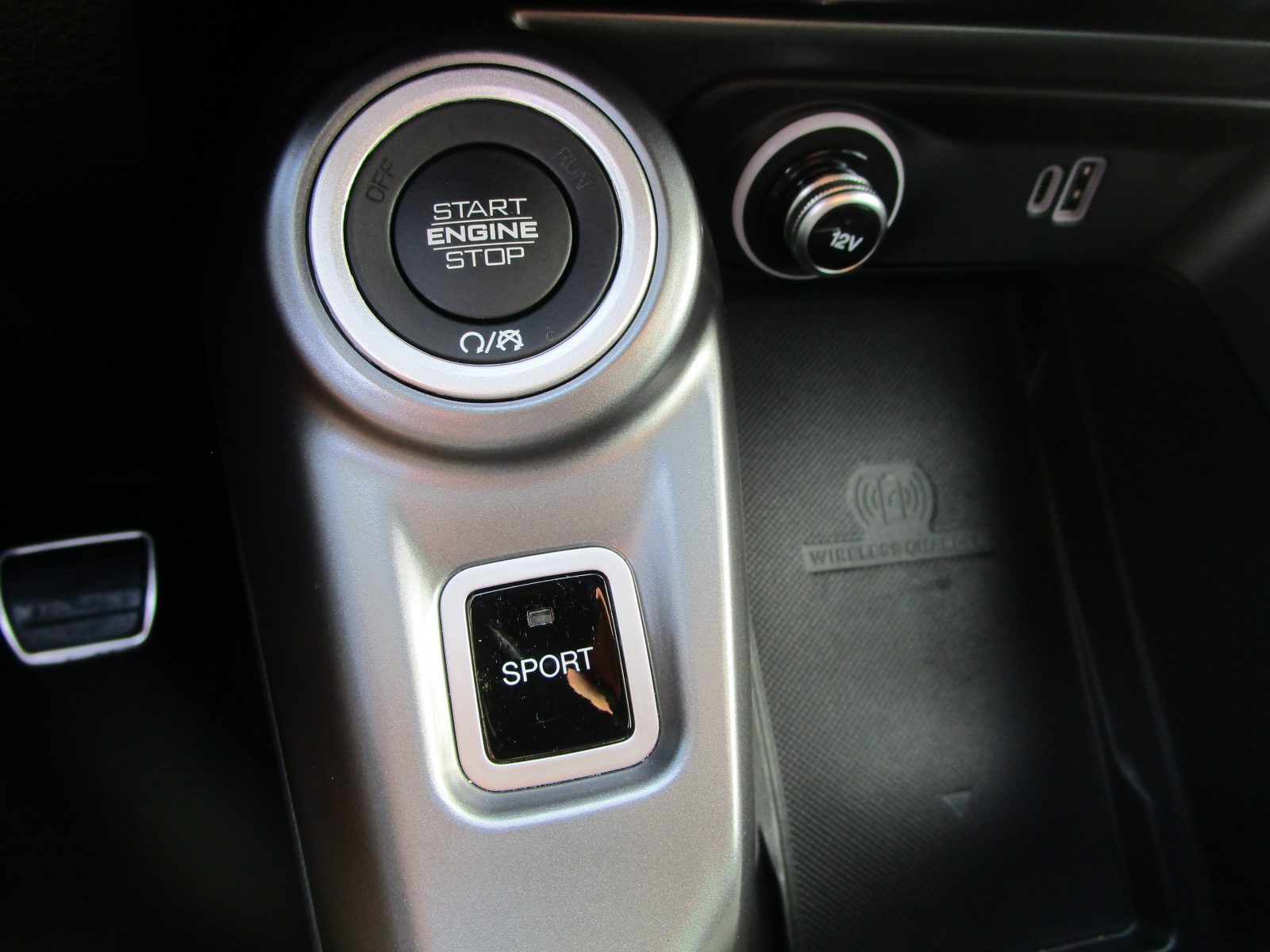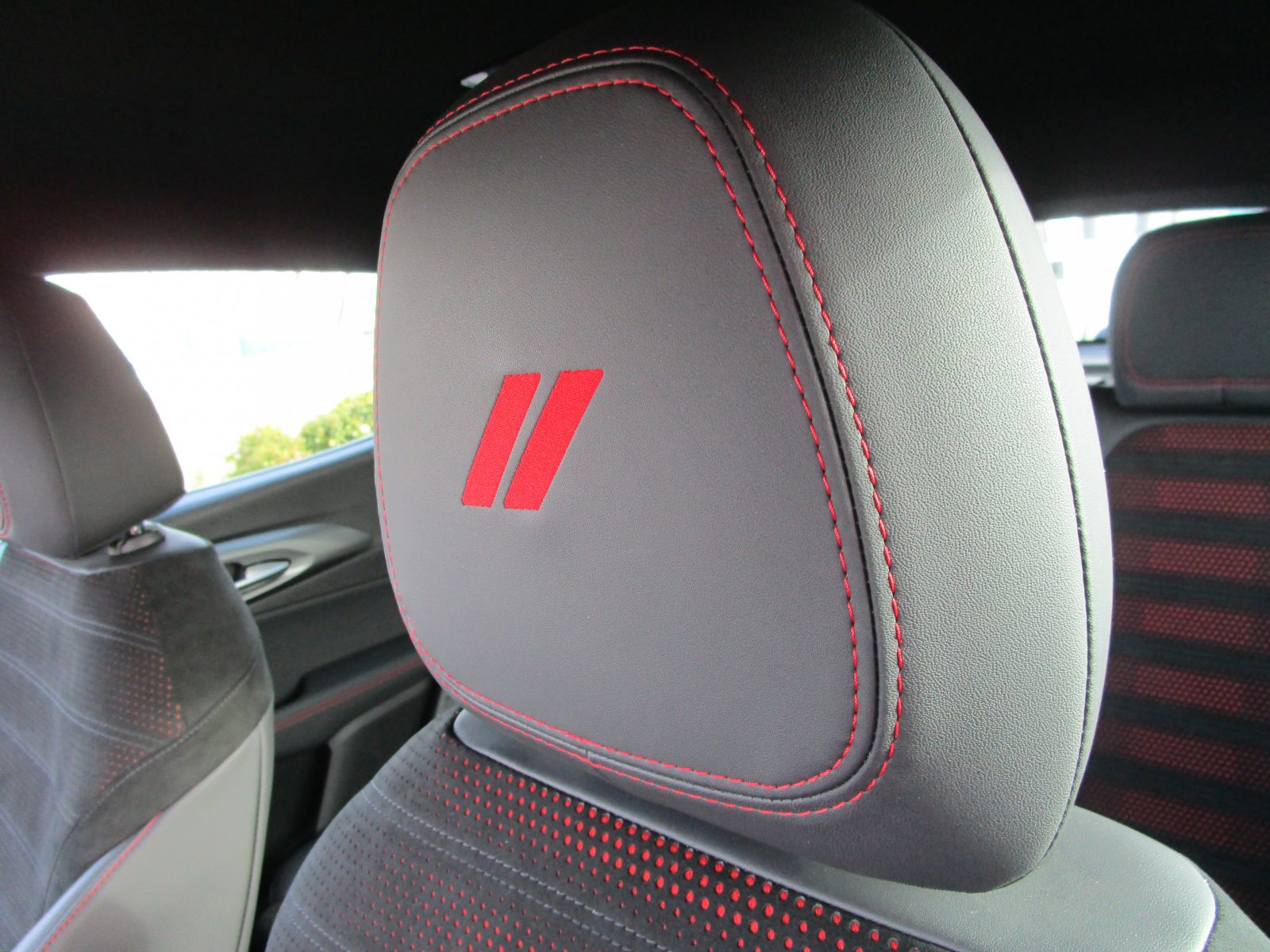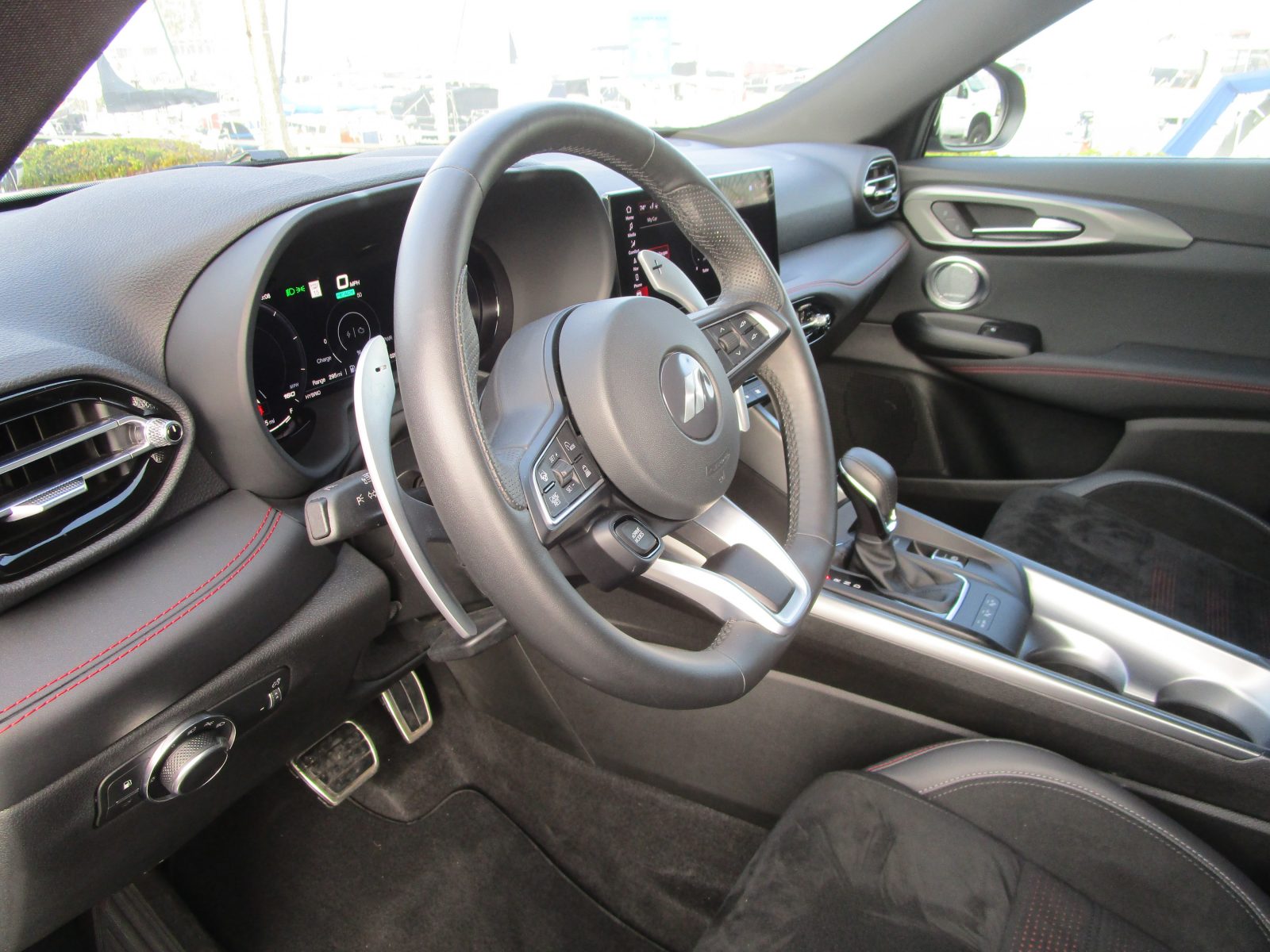The times, they are a changin’ – especially for muscle car enthusiasts. We’ve been seeing lately a lot of “Final Editions” of V8 muscle cars, as the market is turning to turbo 4 and 6 cylinders, as well as hybrid and EV vehicles.
That’s the bad news…the V8 seems to be on its last legs. The good news – carmakers on Dodge aren’t giving up on performance, they’re just taking it in new directions. One that’s especially interesting is the new Dodge Hornet R/T. It’s got a whole lot of cool stuff going on, from a plug-in hybrid turbo 4 pushing near 300 horsepower, to being built on an Alfa Romeo chassis. So, what’s the buzz on the Hornet? Let’s find out.
Dodge DNA
So, the first thing you notice is the Hornet is a crossover. If you were hoping for something jaw-dropping like an old-school wide-body Charger or Challenger, this is not your car.
Which is not to say that the Hornet is without its charms. Dodge made a big effort to give some family DNA, and it’s especially clear up front, with a look that feels right in line with those previous muscle cars.
Slender LED headlights bracket a familiar “mail slot” grille, with a massive lower mesh grille with two smaller side grilles for added menace. Favorite parts for us are the integrated heat extractors on the hood, and the simple double red slashes that’s pure Dodge. If you know, you know.
The profile is pure crossover – but one on steroids, with blacked-out wheel arches and Abyss painted lower cladding that’s unique to the R/T. They flow into muscular fender flares front and rear for a wide, chunky look. Our tester also had the Blacktop Package which adds gloss black mirrors, a dark Hornet badge, gloss black window moldings, all sitting atop of massive 20-inch Abyss finish wheels.
About that Hornet badge – it’s got a cool story all its own. The Hornet name was first used on the Hudson Hornet (yes, just like Doc Hudson!) in the 1950’s which went on to dominate stock car racing in the decade. There was also an AMC Hornet model offered 1970-77 and again in 2006 as a Dodge Concept vehicle. Cool.
Like the front, the rear has some familiar Dodge cues like a slender, full-width horizonal light bar with the illuminated Dodge double slash boldly standing out. Below an Abyss painted lower fascia stands atop dual exhaust outlets hinting that this is no simple grocery getter.
Finishing off the look was our tester’s Blue Steele paint, a creamy cement-toned blue that’s extremely handsome. Dodge likes to have fun with its names – you can also get Acapulco Gold, Blu Bayou, Gray Cray, Hot Tamale, Q Ball and 8 Ball!
Modern Interior Design
Inside is a fresh take on a performance interior.
Open the door, and you’re greeted by our tester’s black Alcantara seats, part of the optional Track Pack, and they give off a rich vibe. If you don’t like suede-like comfort, leather is standard and a bright red leather is optional.
The seats not only look great, they feel great, with plenty of support, and thanks to the crossover body style, a nice upright seating position. The thick leather-wrapped wheel feels equally great to the hands, and it’s even heated – a nice touch. The rest of the materials offer an equally inviting environment with soft-touch materials and red stitching across the dashboard, door panels and on the center console. Tasteful.
Info is served up with a customizable 12-inch Driver information digital cluster display, which gives a variety of information including navigation, and does a cool trick on the speedo and tach which only illuminates the numbers as the needle comes close.
We’re less enamored with the info-tainment system. While at first, the 10.25-inch screen looks nicely sized, the layout is cluttered, and while you do have a touchscreen, the actual items you touch are small and it’s easy to hit the wrong thing. It is a state-of-the-art setup with lots of goodies, including Navi, hybrid system, info-tainment and 360-degree camera and wi-fi, but the interface is frustrating. You’ll also notice no volume knob on the steering wheel, but there is a nice, knurled knob next to the shift lever that’s handy.
We’re also thankful the climate control has separate switchgear below the screen, and they are easy to use and logically laid out. We also like the pushbutton ignition and sport mode buttons right next to the stubby shift lever. Behind the lever are two generously sized cupholders that do a fine job of keeping your drinks, even if you’re throwing the Hornet around corners.
Rear seat is adult-sized friendly, with good visibility and a fold-down center armrest. We also love that Dodge didn’t cheap out the rear seats – they also get a sporty Alcantara treatment that’s quite handsome.
Another benefit of the Hornet’s crossover body style is an ample cargo area, and with the rear seats folded down you have an impressive amount of room, especially for a vehicle that is compact in its dimensions.
Is the R/T the Real Thing?
Driving is what separates the Hornet from the competition.
You have a choice of two engines for stinging power – the Hornet GT features a 2.0-liter, turbo 4-cylinder, pumping out an impressive 268 horsepower and 295 lb.-ft. of torque. A standard 9-speed automatic and all-wheel-drive promises to put the power down.
If you want an angrier ride, you can opt for the R/T like our tester. It’s an interesting mix – a 1.3-liter, turbo four-cylinder with plug-in hybrid powertrain for a combined maximum 288 horsepower and massive 383 lb.-ft. of torque with something they call PowerShot. To handle the extra power, you get all-wheel-drive with a 6-speed automatic. With a 0-60 mph in the mid 5 seconds this is one quick small vehicle!
There’s big fun from PowerShot – it’s like playing Super Mario! Pull both steering-column-mounted shift paddles to activate, floor the gas, and you get a 30 horsepower bump to a max of 288 horsepower and 383 pound-feet for a 15 second blast – perfect for passing or a rapid getaway from a stop light. And this is a throaty little engine that sounds happy to rev and it feels frenetic as it pulls hard to the redline. After a 15-second timeout to cool down, the system is ready for another blast. What an innovative way to have some fun!
And for the more sensible times, it becomes a Green Hornet. (Sorry….) The R/T can go 30 miles in full EV mode on a full charge – a nice way to save on gas. With a level 2 charger, you’ll need about 2.5 hours for a full recharge. It’s efficient in the everyday too – hybrid mode you still get a respectable 26 mpg combined EPA rating, and we easily saw 29 mpg in the daily.
While those engines will the get the lion’s (Hornet’s?) share of interest, there’s a great chassis to enjoy as well. Underneath that Dodge skin is an Alfa Romeo Tonale, and that means you get some real European cred to taunt your friends.
You can feel that breeding in the steering which is perfectly weighted and precise, and the ride quality which is supple (in Normal mode) and responsive. With the AWD and turbo power this is a fun ride that loves to be thrown around – something you can’t really say about the Toyota RAV4 hybrid and CR-V hybrid.
Press the Sport Mode next to the transmission, and the Hornet adds even more attitude, with sharper throttle response, quicker shift, and tighter steering. It also makes the ride feel somewhat harsh – especially with the optional 20-inch rims – so we found that we were judicious in when we’d hit the Sport Mode. In regular driving, the Normal mode was an excellent blend of fun and comfort.
How Much Green for the Hornet?
Well, this is where it gets interesting.
The Hornet GT starts at $31,400, and with a 268-horsepower, 2.0-liter turbo 4-cylinder, all-wheel-drive, European dynamics and crossover utility, it’s a great value. And it’s the Hornet we’d recommend to buyers. Great performance at reasonable prices. That feels very Dodge to us.
An R/T like our tester is a significant upgrade in tech, but also in price, starting at $44,995. We also had the Blacktop Package ($1,595), Tech Package ($2,245), Track Package ($2,595), and Blue Steele Paint ($595). We did save a few bucks with a sunroof delete for (-$615) and a bundle discount for Track Pack and Blacktop (-$600). Add in $1,595 for destination, and we rang the bell at $52,405. Gulp.
Competitors are tough for the R/T at that price. Traditional vehicle in the class like the Kia Sportage Plug-in Hybrid is $38,530, and the Toyota RAV4 Plug-in is $42,835. Neither offer quite the thrills of the R/T but they are significantly less. If you’re hankering for the Alfa Romeo Tonale, it comes in at $56,445. We’d argue that the Alfa is a better-looking piece, and you probably would have some badge appeal. Pro Tip: Go for the Hornet GT!
As a replacement for those HEMI monstors, it might be a tough sell. But we think a whole new group of enthusiasts will find the 2024 Hornet a thrill to drive, and a great value.

Ben Lewis grew up in Chicago, and after spending his formative years driving sideways in the winter – often intentionally – moved to sunny Southern California. He now enjoys sunny weather year-round — whether it is autocross driving, aerobatics, and learning to surf.






















































